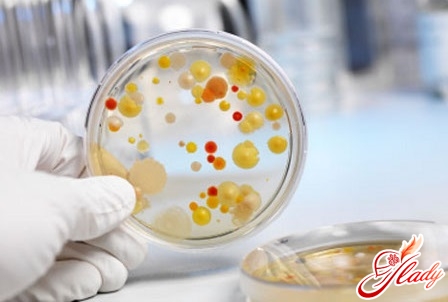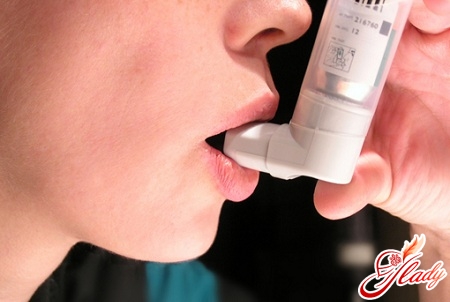
The feeling of a full life is only possiblein good health. It should be agreed that even the most minor illnesses can ruin if not life, then well-being and mood - definitely. And women's health is so capricious that a slight ailment, for example, a violation of the vaginal microflora, can knock us out of the usual rhythm of life for a long time. Especially intimate life. If the vaginal microflora is normal, then the woman is protected from many inflammatory and even venereal diseases. When the microflora is disturbed, the protection weakens. It is necessary to determine what normal vaginal microflora is, what its violations can be, what symptoms will tell about such violations.
When the microflora is normal
There are many "good" ones living in our bodybacteria. This is a kind of symbiosis: we provide them with shelter, and they protect their “home”. The vagina of newborn girls is sterile. But already in the first minutes after birth, the child is attacked by bacteria. They “populate” the vaginal mucosa (and other organs too) and over time form the very microflora. Note that the flora is fickle and changes throughout life. Polysaccharides present in bacterial cells are “responsible” for the changeable state of the microflora. But the polysaccharides themselves are influenced by female sex hormones. Therefore, normal changes in the microflora are caused by hormonal surges: juvenile period, puberty, pregnancy and childbirth, sexual life, menopause. For example, lactobacilli and bifidobacteria predominate in the flora of a newborn girl. Then their number decreases and the flora becomes coccal - populated by epidermal and saprophytic staphylococci. Normal vaginal microflora forms a special acidic environment that performs 2 main functions: protective and evolutionary.
Based on its composition, vaginal microflora is divided into several degrees of purity:
- acidic environment with high levels of lactic acid bacteria - lactobacilli (healthy environment);
- medium weakly acid reaction with a small amount of lactobacilli and the presence of staphylococci, streptococci and leukocytes (healthy environment);
- medium neutral or slightly alkaline reaction with a high level of cocci, leukocytes and a single presence of lactic acid bacteria (the presence of inflammation);
- an alkaline reaction medium with a large number of bacteroides, cocci and leukocytes and the absence of lactobacilli (inflammatory processes).
The last stages of vaginal cleanliness arise due to disturbances in the microflora.
Violation of the normal microflora of the vagina
Violation of the vaginal microflora is calledvaginal dysbiosis or dysbacteriosis. Such a disorder is a disease in itself. Another name for it is bacterial vaginosis. However, this term refers only to a partial disorder of the microflora. You can often hear another name for this disease - thrush or candidiasis. And this term is not entirely correct for describing a disorder of the microflora, since the disease is only a type of disorder of the flora. And there are quite a few of these types. Disorders of the microflora occur in almost every woman at different periods of her life. Any impact on the female body can lead to such disorders. Usually, the manifestations of dysbiosis are minor and sometimes even unnoticeable. But serious disorders can lead to dangerous inflammations, infections and relapses. What factors cause a disorder of the vaginal flora?
It is necessary to stipulate that the listed factors do not always lead to disorders, and even more so to diseases. Nevertheless, at the first symptoms you should consult a doctor.
Symptoms and types of vaginal dysbiosis
With vaginal dysbiosis, a violation occursnormal ratio of bacteria living on the vaginal mucosa. In a balanced state, normal microflora consists of approximately 90% lactobacilli, 9% bifidobacteria and 1% key cells (bacteria mobiluncus, gardnerella, leptothrix, Candida fungi and other microorganisms). Normal microflora is maintained by the immune system. When it fails, the balance between the percentage of bacteria is disturbed, their quantitative imbalance occurs, which leads to the development of dysbiosis. The most obvious symptoms of dysbiosis:
- discomfort in the external genital area;
- the appearance of excreta;
- the appearance of an unpleasant odor.
But, firstly, these symptoms canmay not indicate dysbacteriosis at all, but other diseases. Secondly, vaginal dysbacteriosis may even be asymptomatic. Depending on which pathogenic bacteria predominate in the vaginal microflora, dysbiosis may occur in different forms. Here are the most common microflora disorders (types of dysbiosis).
- candidiasis (or thrush) (the most "light" kind of dysbiosis, this disease causes mushrooms of the genus Candida);
- gardnerellez (this disease was given the name of the bacteria causing it gardnerelly, it is dangerous because it can cause inflammation of the vagina and cervix);
- Leptotrichosis (considered one of the asymptomatic forms of vaginal dysbiosis, causes its leptotrix bacterium).
Any type of vaginal dysbacteriosis is dangerous due to complications that manifest as inflammation of the vagina, bladder, cervix and uterus itself, as well as sexually transmitted infections.
Treatment and prevention of dysbacteriosis of the vagina
Violation of the vaginal microflora entailsdevelopment of many diseases. Therefore, at the first symptoms of such a disorder, it is necessary to consult a doctor who will make an accurate diagnosis and prescribe appropriate treatment. Restoration of normal microflora occurs in three main stages:
In case of infectious nature of the disorder, it is prescribeda course of antibiotic treatment, during which the pathogen is completely eliminated. In the absence of sexually transmitted infections, treatment can be carried out without prescribing antibacterial drugs. Therefore, you cannot choose medications on your own. In addition to antibiotics, antiseptics are used to restore normal microflora. Such drugs are used externally - by inserting tampons and taking vaginal baths. Before or simultaneously with antibiotic treatment, a course of immunocorrection is carried out. Restoring normal vaginal microflora takes about 3-4 weeks. As a rule, tablets and vaginal suppositories are used in treatment. In addition, local antibacterial procedures (baths, tampons) are carried out. At the end of the course of treatment, it is necessary to conduct a control laboratory test, and then engage in the prevention of dysbacteriosis. Prevention of vaginal dysbiosis is, first of all, maintaining hygiene and strengthening the immune system. After the course of vaginal microflora restoration, it is necessary to visit a gynecologist at least 3 times a month for a year to prevent relapse. If the treatment is successful and there are no relapses, all that remains is to support your immune system, observe hygiene rules and lead a healthy lifestyle. Do not forget that normal vaginal flora is your protection from many diseases. Therefore, it is necessary to treat this problem with due attention. After all, women's health is very fragile. Take care of yourself, be healthy and happy!









